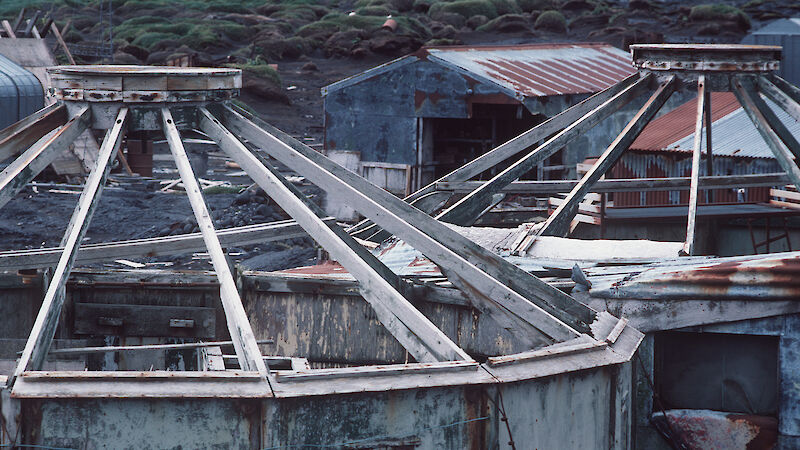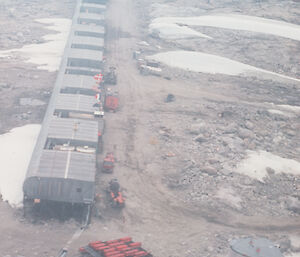In December 1947, the first Australian National Antarctic Research Expedition (ANARE) to establish a station landed at Heard Island. Expeditioners repaired a 20 year old shipwrecked sailor’s hut for temporary accommodation, while they erected 4 more huts built out of US Army pre-fabricated plywood.
In 1954, the first Australian station on the Antarctic continent was established at Mawson. For this station, new aluminium covered buildings were used. The design was a cooperative effort between ANARE, the Australian Construction Services (then the Commonwealth Department of Works), and a Melbourne cool room construction firm, Olympic General Products. The buildings were made up of standard cool room panels. They were timber framed and filled with expanded bakelite (Onazote) insulation. They were lined inside with Masonite hardboard or plywood with aluminium sheet on the outside.
To withstand Antarctic weather conditions, a rigid ‘post- tensioned’ box unit of threaded steel rod conduits were built into the panels at the full length of the walls, floor and roof. The rods were tensioned by nuts at each end to pull the whole thing together as a unit. The units were constructed at the factory in Melbourne, and were easily assembled on site at Mawson station. They were placed on railway sleepers or local boulders piled up to make a level platform. Steel wire ropes pinned to the rock and connected to a steel framework around the edge of the roof held them in place.
This building design reached its peak in 1969 with the development of the first Casey station, Repstat. In an effort to combat the build-up of drifting snow, the station’s buildings were elevated on a birdcage of steel scaffolding. Sometimes referred to as the ‘Casey tunnel’, its elevated structure solved the problem of snow-drift, but the post-tensioned box system created other issues. The designers did not factor in the effect of water vapour migrating through the panel insulation. As a result, in the extreme conditions, it rapidly rusted through from the inside. The rubber gasket seals hardened with time and lost effectiveness, but could not be replaced. Melt-water penetrated the buildings, and was collected in some places by polythene gutters beneath the roof joints. The elevation made the floors cold, and regular high winds caused vibration and noise.
In addition, the design limited the size of buildings and lacked flexibility. The need for secure guy wires around buildings made snow clearing and vehicle access difficult. The hand-made panels were also expensive to produce.
The needs that had shaped this kind of design, primarily the ability to erect the structure rapidly by expeditioners with limited building expertise, were no longer pressing. After this time, stations were built by teams of trades, signalling the end of the heroic ‘do-it-yourself’ era.


